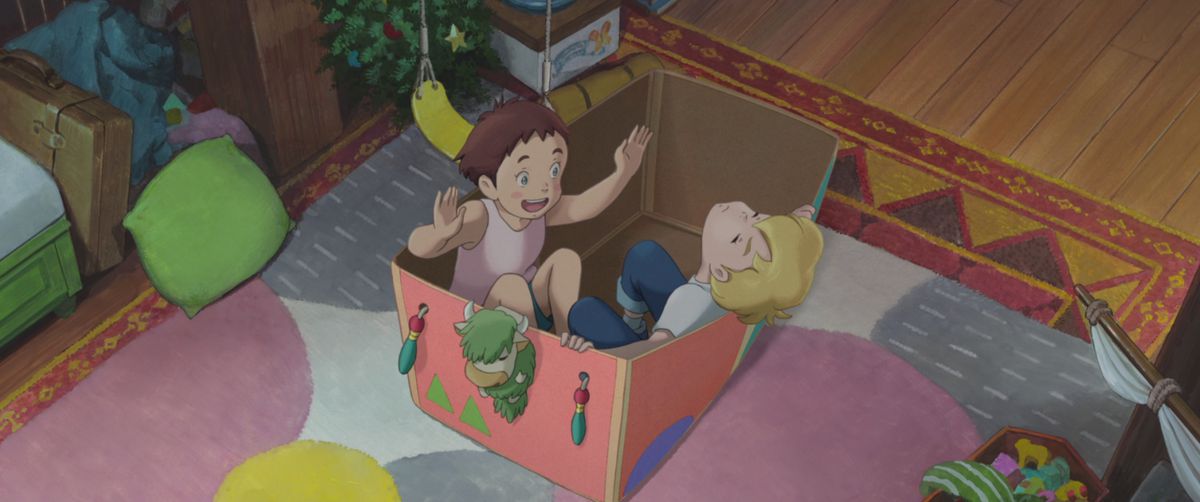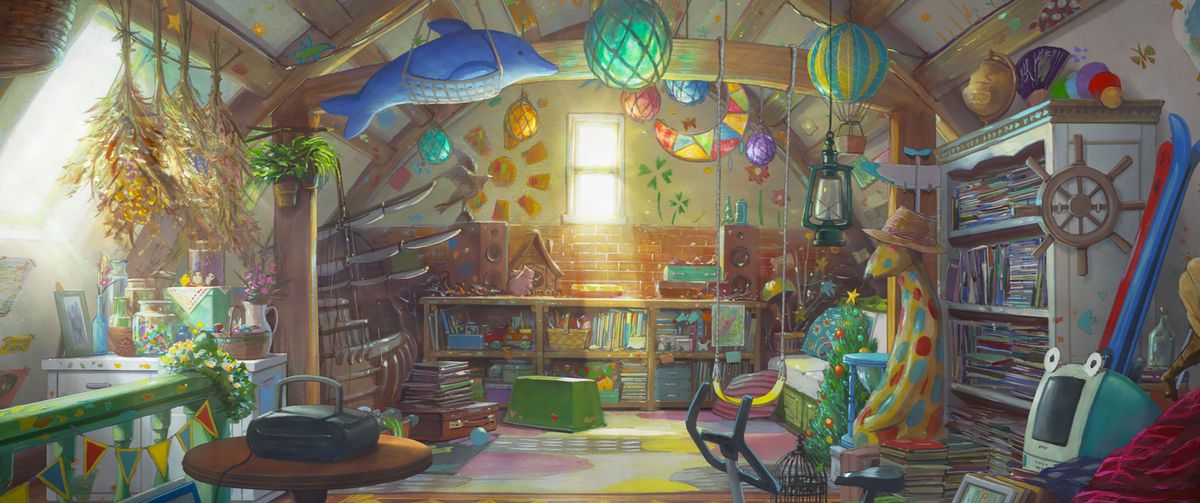The Imaginary is perhaps the closest we’ve come to a Calvin and Hobbes movie
This review from The imaginary takes place during the film’s festival premiere at France’s Annecy International Animation Film Festival. The film can be seen on Netflix in America from July 5.
When Studio Ponoc’s first anime film was released, Mary and the Witches’ Flowerpremiered in 2017, it came as a relief – a promise that the legacy of famed Japanese animation powerhouse Studio Ghibli wouldn’t be completely lost with the rumors of Ghibli closing. Founded by Ghibli veteran Yoshiaki Nishimura (producer of When Marnie was there And The Story of Princess Kaguya), and by hiring former Ghibli employees in an effort to retain their experience and skills for future animation projects, Ponoc was born openly billed as Ghibli’s successor. Mary and the Witches’ Flower was so clearly modeled on Ghibli’s designs and stories that the transition seemed like a fait accompli.
But Ghibli remained active, while co-founder Hayao Miyazaki worked on another animated film, The boy and the heronwhile his son Goro experimented with digital animation to create the television film Earwig and the witch. And Ponoc’s production has been slow for the past seven years, with no new features — just the charming short collection Humble heroes, and a number of great promotional projects. So the new feature The imaginary is a second round of relief for animation fans – both because the company is still in the business of making movies, and because The imaginary sees that it is just starting to deviate from the outright Ghibli imitation. (And on a side note, 2024 has been a terrible year for cinematic imaginary friends so far.)
Image: Studio Ponoc/Netflix
The imaginary just debuted at France’s Annecy International Animation Film Festival and is coming to Netflix on July 5 via an exclusive distribution deal. Adapted from a 2014 novel by British author AF Harrol, the film follows a feisty young girl named Amanda and her imaginary friend Rudger. (Not ‘Roger’, she and Rudger keep indignantly reminding people, but Rudgerwhich is pronounced much the same way in Netflix’s dub and the children’s posh British accents.) Rudger is a little blond boy who accompanies Amanda on all her imaginary adventures, and seems to view her more as a playmate than a creator . it’s notable that she occasionally treats him like a favorite toy – something respected and loved, but still capable of being beaten a little for excitement and drama.
Amanda’s father recently passed away, and while her mother, Elizabeth, struggles to keep the family bookstore open, she is ready to close it and move on to a safer profession. Elizabeth seems like a kind woman who is a bit at the end of her tether, trying to deal with grief, a failing business, and a hyper child who leaves a mess behind because she has her head in the clouds and blames it on her imaginary friend gives. . Their dynamic feels particularly like the frustrated family energy in Calvin and Hobbes: Elizabeth wants Amanda to pick herself up and pay attention to her surroundings, while Amanda is distracted by the elaborate, adventurous worlds she creates. But where Hobbes’ relationship with Calvin’s mother mainly boils down to a minor frustration that she doesn’t make tuna sandwiches more often, Rudger harbors more melancholic desires. He also considers Elizabeth his mother, and wishes she could see and acknowledge him.

Image: Studio Ponoc/Netflix
There is much more Calvin and Hobbes energy that plays a role The imaginary: Like Bill Watterson’s comic duo, Amanda and Rudger climb into a box and it suddenly becomes a vehicle that flies through the air as the real world falls away. The games they play together are more real to them than anything in the world, and their partnership is more alive and important than Amanda’s other friendships.
The film’s most exciting and visually sublime sequences occur whenever the story enters the fantasy world, where form is fleeting and fluid. People, objects and environments all change on a whim, and the possibilities seem limitless. Ghibli animator Yoshiyuki Momose (Ghostly away, Porco Rosso, Whisper of the heart) directs the film with a kind of commitment to shape-shifting and symbolic shift Hayao Miyazaki brings his best films. (Millennium actress, Bell pepperAnd Perfect blue director Satoshi Kon made a similar fluidity of form a signature in his films, but usually with a conscious aggression and sense of nightmare menace rather than Miyazaki’s and Momose’s expression of bouncy joy.)
But while Miyazaki films generally avoid outright villains, The imaginary faces a particularly compelling and current threat. There’s plenty of Miyazaki-style emotional stakes too – Rudger, like other imaginary friends, threatens to disappear when Amanda isn’t focused on him, and he gets to see firsthand what happens to “imaginary friends” whose children die. grow up, or move on. But The imaginary amps up the danger with a real villain, who is better discovered than described, and who brings an old-fashioned sense of gleeful, gratifying misbehavior to the film, for all its sunny explorations of children’s adventures in the worlds they create.

Image: Studio Ponoc/Netflix
The imaginaryThe film’s animation still shows plenty of Ghibli influence, from the crowded, quaint rooms full of glossy detailed objects to the way characters cry, with rivers of outsized, sticky tears flowing in messy rivers down their faces. In close-ups, when they are experiencing great emotions, Amanda and Rudger look very much like off-kilter Ghibli characters, just slightly off model. But Ponoc’s film also leans toward its own look: a softer, painterly color scheme, thinner lines and flatter colors, and character designs a little closer to Toho-Towa’s 1989 international release. Little Nemo: Adventures in Slumberland than any specific Ghibli film.
And Ponoc’s film also feels like it’s aimed more heavily at younger viewers than most of Ghibli’s work. The screen is often filled with energetic bustle, as Rudger meets an entire colony of displaced imaginary or the story plays out in another child’s imagination. But the story itself is quite simple and straightforward, exploring feelings of pain, loss and fear in Pixar mode. There are a few authentically scary moments, but mostly the film keeps the focus on the kid, with kids facing the dangers and solving the problems adults aren’t aware of, and playtime often takes center stage.
The imaginary is not as visually or narratively rich as Mary and the Witches’ Floweror as transcendent as Miyazaki projects want The boy and the heron. But for Ponoc it feels like a step in the right direction, an attempt to find his own voice and support. It may not be remembered with the same passion decades from now as Ghibli’s early projects, but as Ponoc continues to experiment and expand, it may well be remembered as the first step toward shaping its own signature creative legacy, and stepping out from below. Ghibli’s shadow. In the meantime, it’s a dizzying experience for young anime fans, a film that aims to visualize what it feels like to daydream as a child, to enter a world of absolute imagination where everything else falls away.
The imaginary coming to Netflix on July 5.
